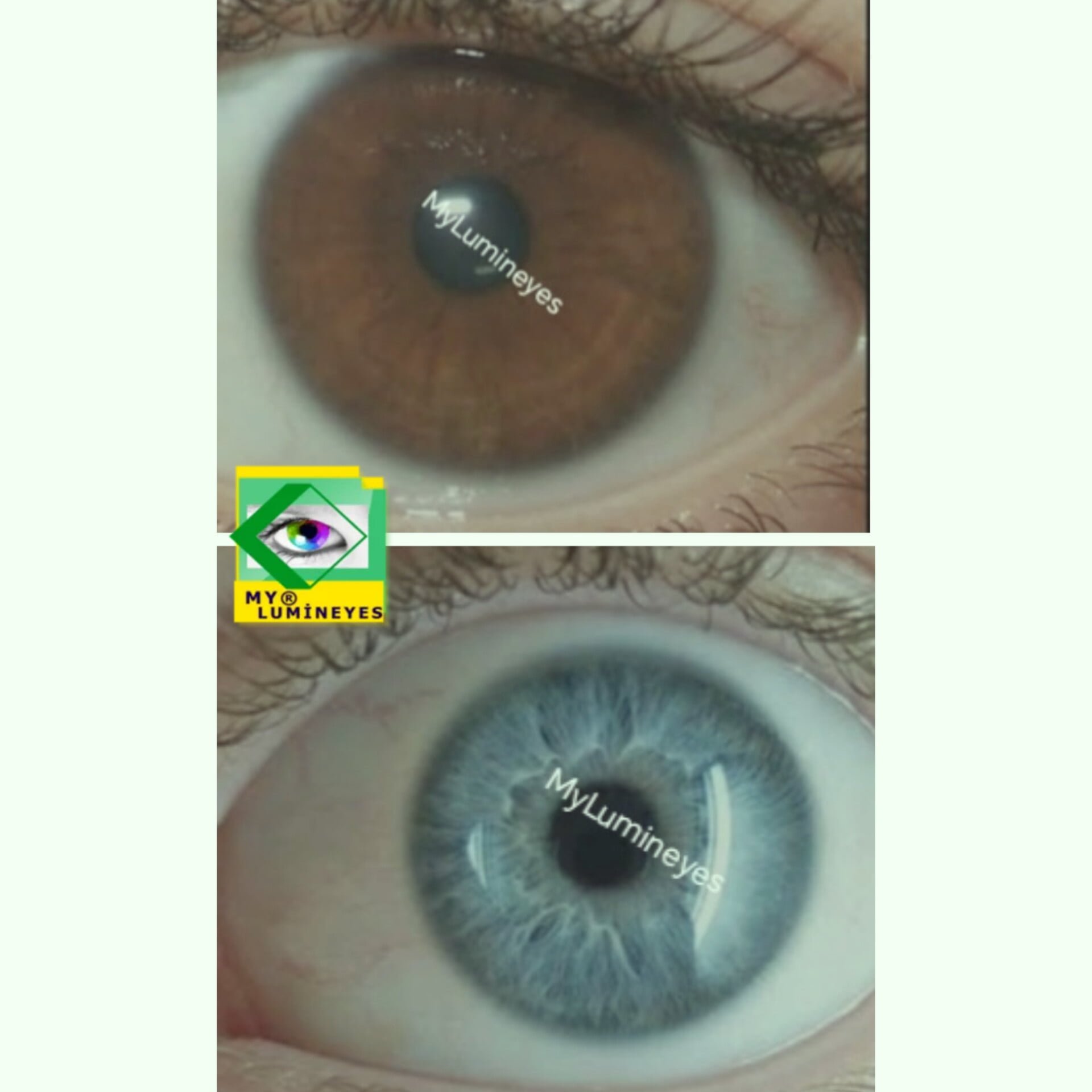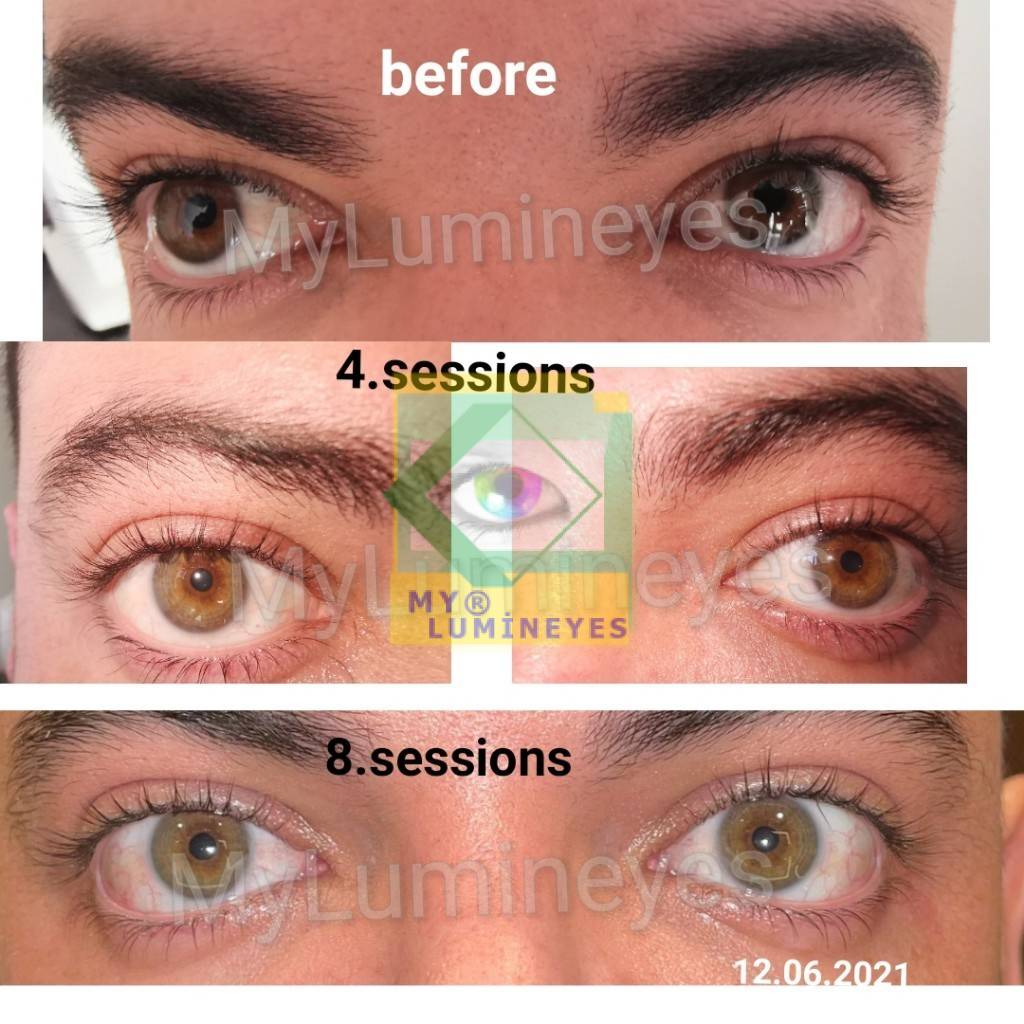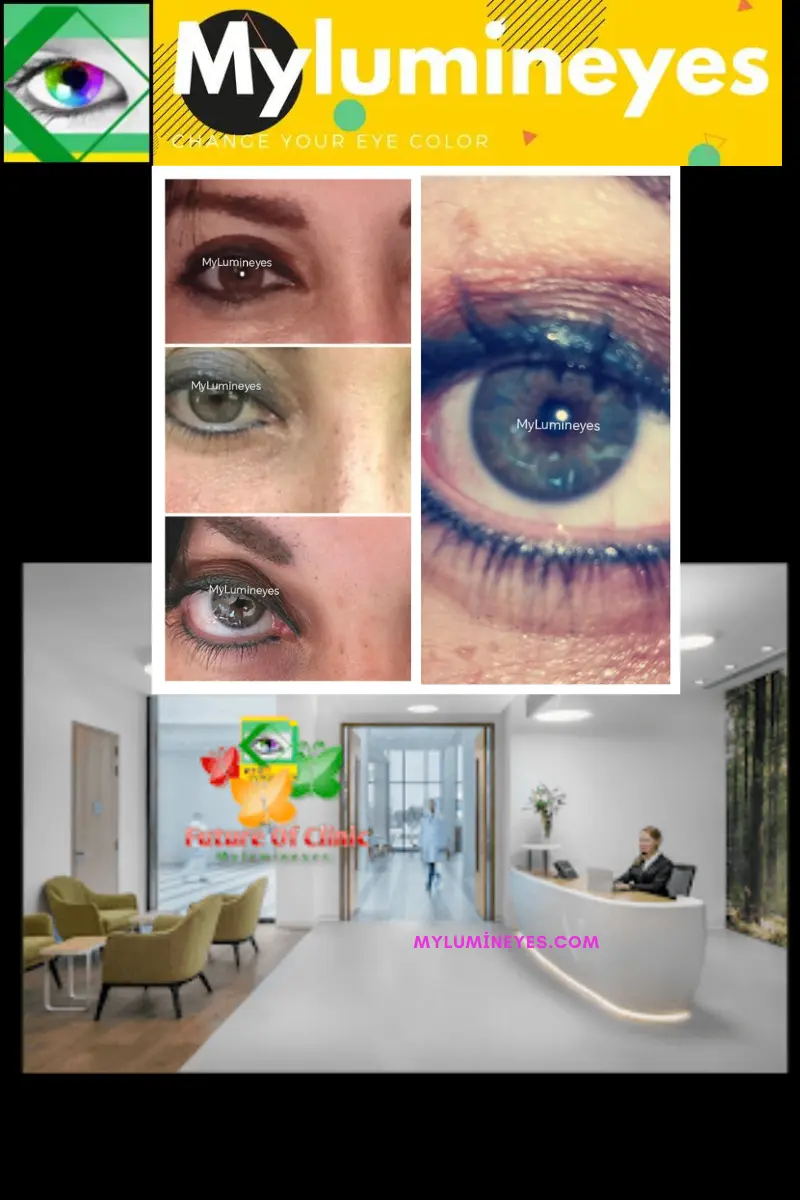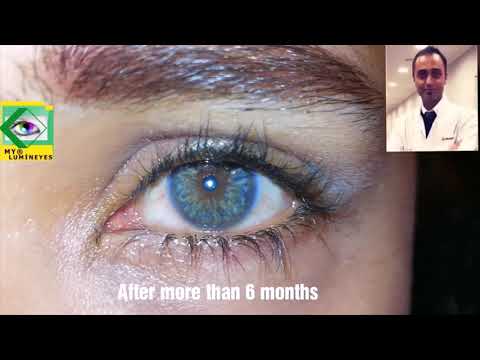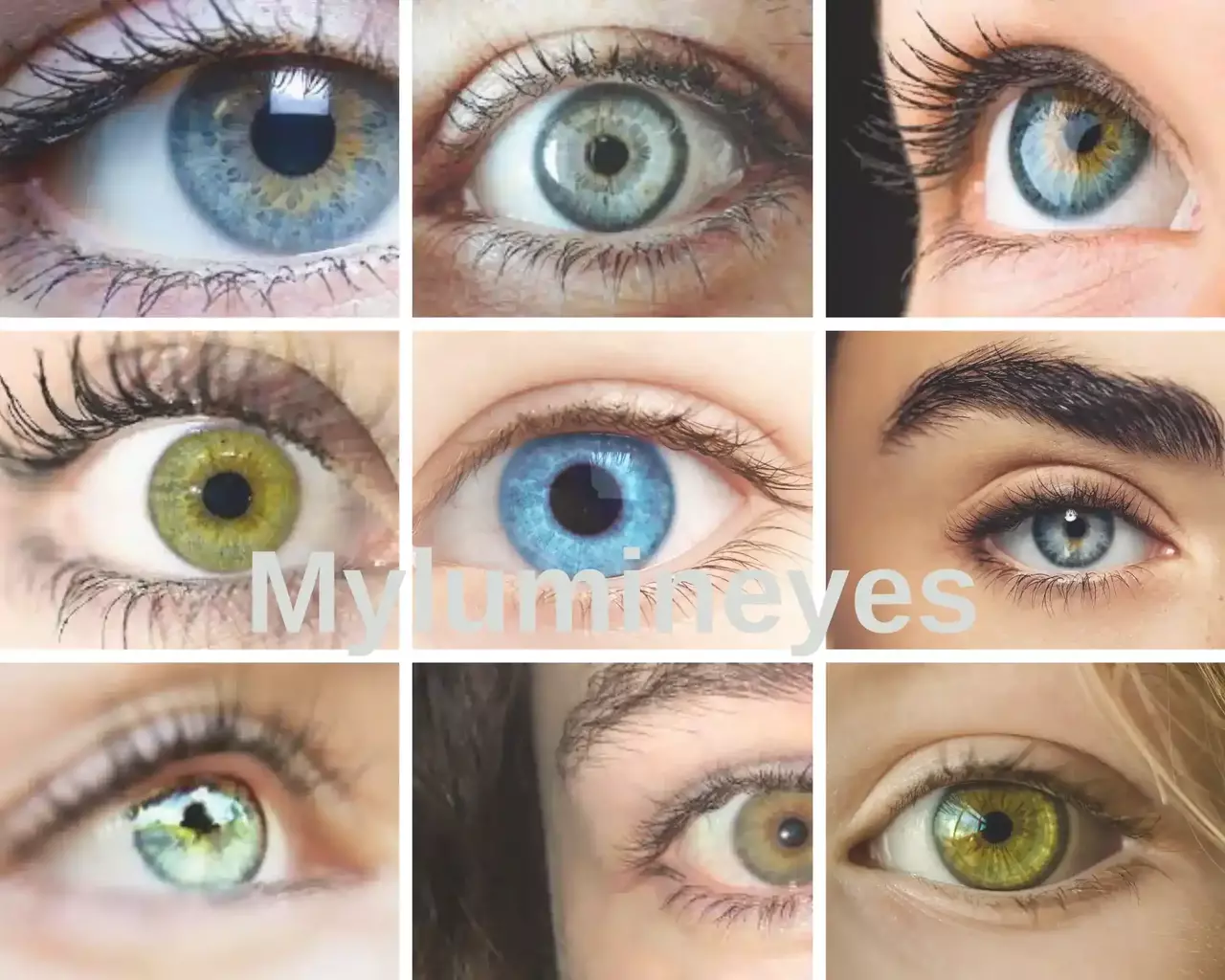Retinal detachment and laser treatment
Comprising numerous photoreceptor cells sensitive to light, the retina is the innermost layer of the eye. Sensing light, these cells convert it into electrical impulses that eventually pass via the optic nerve to the brain to generate sight. Retinal anomalies affect the retina and can result in poor eyesight. Retinal illnesses are disorders of any retinal component. Retinal problems are what? The most often occurring retinal conditions include retinal detachment, age-related macular degeneration, diabetic retinopathy, and retinal vein or artery occlusions.
Additionally, inflammation and damage to the retina may ensue. What are detached retinal symptoms? Retina laser surgery is a frequently used treatment method. The retina stands out due to photoreceptors, highly specialized cells that respond to light signals, mostly found in the macula.
Retinal detachment and disease symptoms:
- Can be visual alterations.
- Certain locations may cause vision impairment or fuzzy vision.
- Suddenly, I spotted several floating things.
- Observing lightning at night may be challenging due to visibility issues.
- Having problems adjusting to light changes.
- Changes of color vision capabilities.
- Lose of peripheral vision.
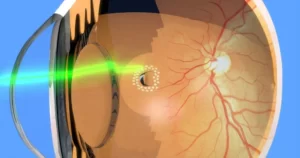
Detached retina (retinal detachment)
A retinal bleed occurs when the thin layer at the back of the eye (the retina) gets detached. It must be treated immediately to prevent irreversible vision loss. A detached retina, or retinal detachment, is a dangerous eye ailment. Retina, the tissue layer in the back of the eye, moves away from the tissues that support it.
Eye floaters, flashes, and a darkening of the side vision are indicators that this may be occurring.
Retinal detachment is the separation of the light-sensitive membrane (retina) from its supporting layers at the rear of the eye.
Retinal detachment, or a detached retina, is a dangerous eye disorder that impairs vision and may result in blindness if left untreated. It affects the retina, a layer of tissue that borders the back of the eye. It involves the retina separating from the tissues that support it. Vision symptoms include flashes of light, floaters, or the perception of a shadow. Floaters are black patches and wavy lines that appear in your vision.
Macula and peripheral retina
The macula is the part of the retina in the middle.Near the optical axis is where it is located. The fovea is part of the macula that is located in the middle and is where the cones focus their attention. In the center of the retina, when the visual acuity is at its highest, this area produces a slight depression that is characteristic of the retina.
The fovea is the focal point of this region. The papilla, which corresponds to the emergence of the optic nerve, is devoid of photoreceptors. The papilla allows the central retinal artery to perform its vascularization function by penetrating the eyeball. The artery splits into two separate branches, which then split into two more branches, called the temporal and nasal branches.
Some might have a slight effect on eyesight, while others can cause blindness.
However, the majority of retinal problems may be preventable if an eye doctor detects the condition early and administers the right medication. Retinal disorders are a significant cause of impaired vision. They can be caused by aging, such as age-related macular degeneration; be inherited, such as retinitis pigmentosa; or result from another condition, such as diabetic complications. Faced with this public health issue, researchers are mobilized, and rapid progress is being made, which will shape the medicines of the future.
The retina is the inner layer of the eye that is sensitive to light
Retinal disorders can be present at birth or develop later in life and frequently result in visual loss. The retina comprises sensory and nerve cells and lines the inside of the eyeball. Incoming light impulses are detected by sensory cells and sent to the brain through nerves. Cones and rods are the two kinds of sensory cells.
Cones are responsible for color and light vision, whereas rods are responsible for seeing in dim light. There is a central point in the middle of the retina known as the “yellow spot” or “macula lutea.” The yellow patch includes a “foveola” pit. There are only cones without any rods. This is the region with the clearest eyesight and the optic nerve’s departure point.
The retina is composed of many layers
The pigment epithelium, the outermost layer, is close to the choroid. Choroid blood vessels feed the retina with oxygen and nutrients.
Diseases that often come with age can make the retina and macula not work as well as they should.
If these diseases are detected and treated in time, the progressive loss of sight can be at least halted in most cases. Sometimes it is even possible to optimize the patient’s visual acuity again.
symptoms of retinal detachment and disorders
Bright Lights
Multiple illnesses, including migraines, eye injuries, and retinal abnormalities, can cause flashing lights. If you seldom have headaches or have never seen random flashing lights before, this might indicate a retinal disorder or disease.
The retina is responsible for delivering light signals to the brain, as we discussed previously. When the retina is hurt or sick, it may send wrong or strange signals to the brain. This could be what causes the “flashing light” effect.
“Dimmer” Vision
Dim vision is characterized by things appearing darker, “muddier,” and with less contrast. Some relate it to the appearance of wearing slightly tinted sunglasses or dimming an overhead light.
Double Vision
Double vision is the condition in which a person simultaneously perceives two distinct images. The duplicated version is frequently blurrier and less distinct than the original. The two pictures frequently overlap, are layered, and/or are hazy, which can be unsettling and distressing for those suffering from this symptom.
Even though double vision can be a sign of many different health problems, it’s usually a sign of a problem with the retina.
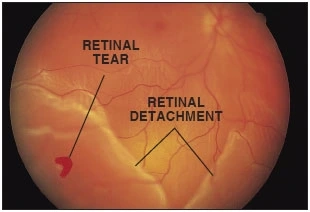
Perverted Vision
One can categorize double vision as a type of vision distortion. However, the majority of people with retinal abnormalities report the following forms of vision distortion:
Double vision “Wavy” lines Things seem to be crooked.
The degree of these vision impairments might vary, and many individuals mistake blurred vision for age-related vision decline. But you should always have a trained eye care professional check your eyes to make sure you don’t have something serious, like a retinal disease.
vision with spots and/or lines
Everyone has experienced seeing random dots or lines in their vision for a few minutes before they vanish. These are common and will occur to everyone at some point.
However, if this occurs more frequently or if the lines or specks persist, this might be an indication of a severe condition. This is a common symptom of retinal degeneration or injury. Damaged retinas give erroneous information to the brain, causing these random lines or squiggles to appear.
Blind Spots
Due to the location of the optic nerve at the back of the eye, everyone of us has a blind spot in our peripheral vision.
Developing larger or more blind spots is reason for alarm and a clear indicator of retinal problems. These might be blind spots, big shadows, or something “blocking” your vision in a particular location.
vision difficulties that become progressively worse over time. This symptom is more difficult to identify. As stated previously, it is normal for our vision to deteriorate as we age. It is a natural part of existence.
Causes of retina diseases and Retinal Detachment
Retinopathy of prematurity and retinoblastoma are prevalent in young people. Hereditary macular degeneration and retinal dystrophies are uncommon retinal disorders.
Numerous illnesses can compromise the functionality of the macula and retina. The following categories relate:
age-associated retinal disorders, such as age-related macular degeneration (AMD). There are two varieties: dry and moist.Another disease is the cause of retinal disorders. Also after cataract surgery ,retinal detachment can occur.
- Retinal inflammatory diseases
- Inherited retinal disorders
The most typical causes include:
Diabetes-related retinal disease (diabetic retinopathy)
A disease of the eyes linked with hypertension (hypertensive retinopathy) Retinal damage can result from persistent, untreated hypertension. Most frequently, the elderly are afflicted.Vascular occlusions and blood circulation abnormalities in the retina or optic nerveRetinal tear (macular hole), retinal detachment, or vitreous detachment (retinoschisis)Central serous chorioretinopathy, also called “manager’s disease,” is a common retinal disease that mostly affects men between the ages of 20 and 50 and may be caused by stress.
Pigmentary retinopathy is a group of inherited retinal diseases that cause photoreceptors to slowly die off.This can lead to night blindness, tunnel vision, and less clear vision, all of which can lead to blindness.Retinal detachment happens early and more commonly in myopic individuals. For this reason, individuals with extreme myopia should have frequent retinal exams.
Retinal detachment
In cases of detached retina, the sensory cell layer separates from the retinal pigment epithelium. This illness is rather uncommon, yet it can have catastrophic repercussions. Untreated individuals can go blind if left untreated.
The most prevalent causes of retinal tears are degenerative abnormalities in the retina and vitreous humor. Retinal detachment is prevalent among the elderly and those with extreme myopia. Additionally, there is a hereditary propensity.
Retinal split
Retinal splitting (retinochisis) is the age-related separation of the retina’s layers. The early phases of this disease occur in a large number of elderly individuals without producing any complications. The alterations often do not occur in the center of the retina, preserving visual acuity. A retinal split normally does not require treatment.
Macular degenerationThe buildup of metabolic products causes damage to the macula in age-related macular degeneration. The macula is the core portion of the retina and the region with the finest vision. This disease can substantially diminish visual acuity. Macular degeneration is widespread. At least in its early stages, age-related macular degeneration affects many older people.
Diabetic retinal retinopathy
Diabetic retinopathy is a disease of the retina that results from diabetes. After several years of diabetes, a high proportion of diabetics acquire indications of diabetic retinopathy. The rise in blood sugar in diabetics eventually causes damage to the retina’s tiny blood vessels. The retina develops hemorrhages, and lipids and proteins are accumulated there. Fluid accumulates in the macula region (macular edema). If the retina is severely injured, retinal detachment may occur.
Obstruction of a retinal vein or artery
A blockage of the central retinal vein is more prevalent in the elderly. The result is vision impairment ranging from mild to severe. The obstruction is likely caused by sclerotic alterations in the vessels. In addition, blood circulation abnormalities may be the cause. Increased intraocular pressure and high blood pressure can contribute to vein blockage. An embolism can result in a blockage of the retinal artery.
Retinopathy of early childhood
This disease of the retina is prevalent in prematurely-born infants. In the immature retina, new blood vessels develop and embed into the vitreous body. These arteries distort the retina, and there may also be hemorrhages. Retinal detachment caused by vascular tension can result in blindness. Infants born prematurely who require ventilation are the most impacted.
Retinoblastoma
Retinoblastoma, the most common eye tumor in children and a malignant tumor of the retina, is either present at birth or develops in the first years of life.Typically, it is observed when the pupil appears white. The tumor has already reached such a size that it has spread into the vitreous body. Strabismus might be an indication of retinoblastoma as well.
Retinal inflammations and lesions
Small unicellular parasites, such as viruses, borreliae, fungi, and toxoplasmas, can all cause inflammation of the retina.
When the eyeball is hit or when sharp things like splinters get into the eye, the retina can get hurt.
Macular degenerations and retinal dystrophies
Macular degenerations that are inherited include, for instance, Stargardt’s disease and Best’s disease. They often manifest in infancy or adolescence but can sometimes occur later in life. Retinal changes may have varying degrees of impact on visual acuity.
In the case of inherited retinal dystrophies, they are either cone or rod abnormalities. The slow degeneration of these sensory cells causes a steady decline in vision. Retinal dystrophies cannot be cured.
How do retinal disorders become resolved? Retinal Laser Surgery
Laser photocoagulation is now the preferred treatment method for the vast majority of retinal tears in most eye doctor’s offices. The most common type of laser is argon. They can use light radiation to “weld” the edges of a retinal tear or hole to the tissue that lines the back of the eye.The surgery prevents the retinal tear from progressing to a full retinal detachment. And your doctor will shine a medical laser into your eye, causing incredibly small burns around the tear or hole in the retina. The burns leave microscopic scars that help to heal the tear and keep the retina in the appropriate position.
If you receive this therapy, your physician will:
Put an anesthetic in your eye.Use the laser to seal the tear in the retina by shining it through the pupil of your eye. When your doctor uses the laser, you may see a flashing light.
After this therapy, your physician may prescribe specific eye drops to prevent further swelling. While your eye recovers, you may need to avoid some activities, such as intense activity and heavy lifting.
A laser is simply a light with a specific wavelength.
According to their spectral wavelength, there are two primary types of lasers used to treat retinal diseases: green and yellow lasers. The Argon Green Laser is the more common of the two lasers.The frequency of this laser is 532 nm. In addition to the aforementioned two lasers, additional lasers, such as diode lasers, multicolor lasers, kyrpton lasers, yellow micro-pulse lasers, etc., may be utilized to cure retinal illnesses.Retina Laser works by producing a photocoagulative response at the site of application, or, in other words, by generating a scar at the site of application.
This protects the core portion of the retina from hypoxia-related damage in conditions such as diabetic retinopathy by reducing the oxygen demand of the peripheral retina.
In contrast, in peripheral lattice degeneration or a retinal tear, a retinal laser develops a hardened patch of scarring surrounding the retinal thinning, therefore preventing fluid from traveling beneath the retina through the retinal tear.
The therapy for retinal detachment depends on the severity of the retinal injury. Small holes and rips in a still-attached retina are laser-sclerosed to avoid further sinking of the retina. Laser therapy of the retina is no longer effective if the retina has already detached. Reattaching the retina to the retinal pigment epithelium requires surgery.
The doctor sews an external silicone rubber “lead” onto the sclera. Lead hollows out the wall of the eyeball from the exterior, bringing the pigment epithelium back into contact with the retina. If this is insufficient, as in the case of extensive retinal detachment, silicone gas or oil is used to fill the eyeball. Thus, the retina is forced against the inner wall of the eyeball.
Vascular illnesses of the retina
In vascular illnesses of the retina, such as diabetic retinopathy and venous occlusion, new vessels of inferior quality grow and frequently become brittle as a result of vascular damage. This can result in retinal hemorrhages. Therefore, one of the primary goals of treating retinal vascular illnesses is to inhibit the creation of these new blood vessels.
VEGF inhibitors can be administered into the eye in order to prevent the creation of new blood vessels. VEGF (Vascular Endothelial Growth Factor) is a growth factor produced by the body that promotes the creation of new blood vessels. Additionally, the physician may inject anti-inflammatory drugs into the affected eye. Laser coagulation also aids in the prevention of new vessels and retinal hemorrhage. The doctor uses a green laser to sclerose the blood vessels.
Laser Surgery coagulation is also used to treat retinopathy of prematurity
In cases of severe disease with retinal detachment, a vitrectomy is necessary. Treatment options for retinoblastoma include total removal of the affected eye, chemotherapy, and radiation therapy. Age-related macular degeneration is an age-related condition that is only partially treatable. When the disease is accompanied by choroidal neovascularization, VEGF inhibitors are used.
Does surgery used to change eye color cause retinal problems in the eye?
During iris implant surgery or keratopigmentation, there is a chance of retinal detachment or damage. However, there is no risk of retinal detachment or disease development in the Lumineyes laser eye color change process.

